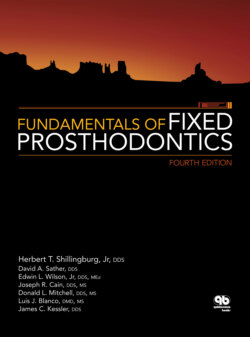Читать книгу Fundamentals of Fixed Prosthodontics - James C. Kessler - Страница 37
Unilateral balanced occlusion
ОглавлениеUnilateral balanced occlusion, which is also commonly known as group function, is a widely accepted and used method of tooth arrangement in restorative dental procedures today. This concept had its origin in the work of Schuyler44 and others who began to observe the destructive nature of tooth contact on the nonworking side. They concluded that inasmuch as cross-arch balance was not necessary in natural teeth, it would be best to eliminate all tooth contact on the nonworking side.
Therefore, unilateral balanced occlusion calls for all teeth on the working side to be in contact during a lateral excursion. On the other hand, teeth on the nonworking side are contoured to be free of any contact. The group function of the teeth on the working side distributes the occlusal load. The absence of contact on the nonworking side prevents those teeth from being subjected to the destructive, obliquely directed forces found in nonworking interferences. It also saves the centric holding cusps (ie, the mandibular facial cusps and the maxillary palatal cusps) from excessive wear. The obvious advantage is the maintenance of the occlusion.
The functionally generated path technique, originally described by Meyer,45 is used for producing restorations in unilateral balanced occlusion. It has been adapted by Mann and Pankey for use in complete-mouth occlusal reconstruction. 46,47
